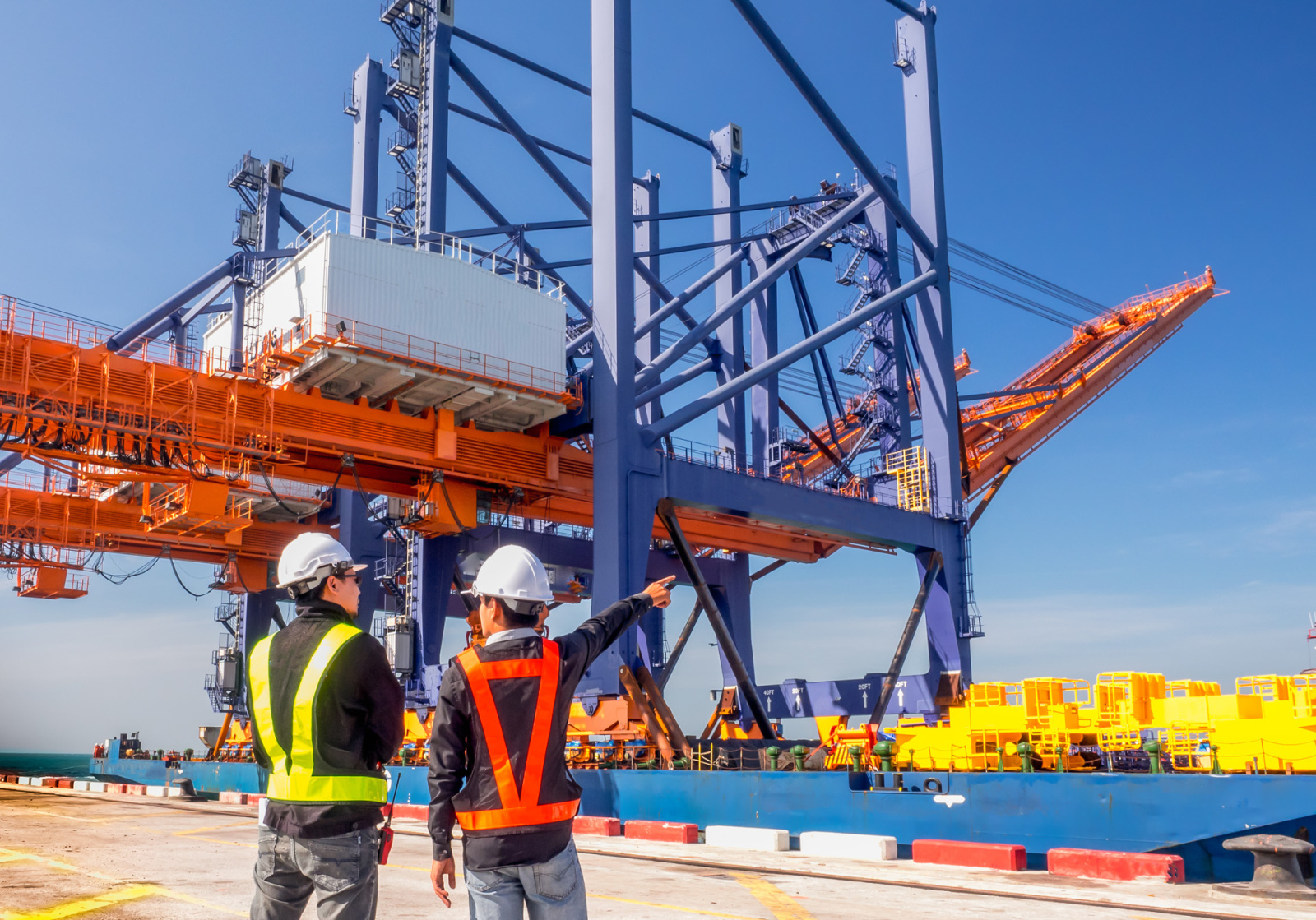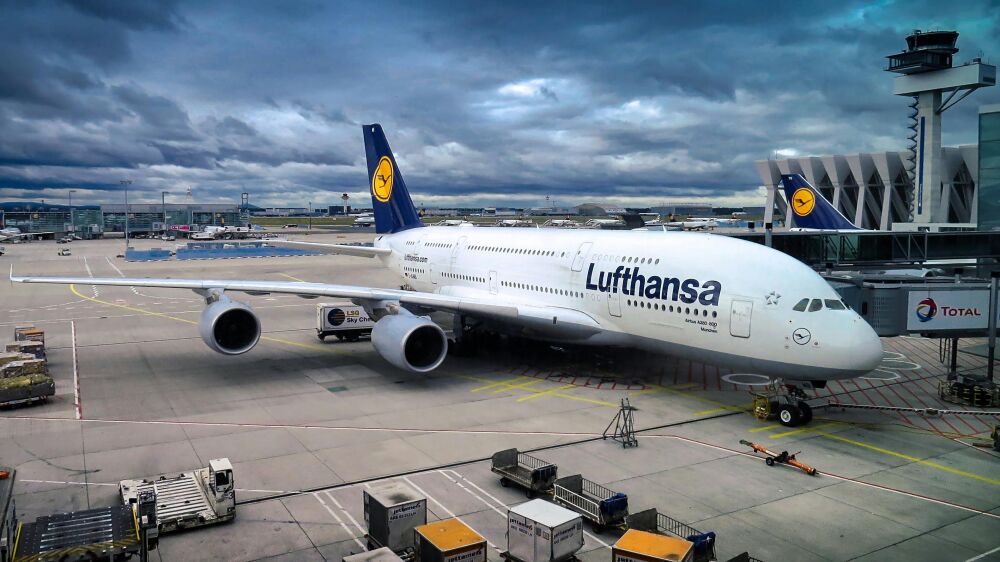
Glossary. The most commonly used terms in freight transport

Mar 19, 2024
Logistics is quite a broad sector. At first glance, it's impressive, with ships as big as four football fields lined up one after the other and terminals so large that you could build a decent-sized village on them. You also come across a truck on almost every square meter of highway. The sector is crucial for nearly every aspect of the economy because even the technician who only works with a laptop usually does so on a computer produced in China.
The language used within our versatile field is also unique. There are terms that someone from outside the sector may need to understand. Oh, and most terms have several synonyms that are just as clear. Exactly...
To make the suffering more bearable, we have compiled a list of the most commonly used terms in freight transportation.
- ADR
Are you transporting dangerous goods by road? Then, you will inevitably come across the term ADR. ADR stands for Accord européen relatif au transport international des marchandises Dangereuses par Route, which stands for the European Agreement for transporting dangerous goods by road. When a freight forwarder refers to "ADR goods," they mean that they are hazardous substances. - AWB
The abbreviation AWB stands for Air Waybill, the document that accompanies the transportation of goods by air. It proves that the shipper and carrier have agreed on what is being transported and where it is going. - BAF
You pay freight costs if you transport goods by ship over the sea. Market and world development surcharges often supplement these freight costs. BAF stands for Bunker Adjustment Factor and is charged by shipping companies when fuel prices are subject to significant fluctuations. - Bill of Lading (cognossement)
A Bill of Lading, abbreviated as B/L, is a document for transporting goods by sea. Another term for it is cognossement. - Block pallet
We jokingly say that this is the "brother" of the Euro pallet. A standard pallet size is usually 100 x 120 centimeters. - Booking confirmation
It belongs here, the booking confirmation. When transport is booked, a booking confirmation is sent to you to confirm that your order has been received in good order. At this point, you can be sure that they will start working on your order. - BTI (Binding Tariff Information)?
If you are importing or exporting goods and are unsure under which HS code they should be classified, you can request a BTI from Customs. Using a BTI helps prevent the use of an incorrect goods code. This way, you avoid the risk of too much or too little customs duty being charged. If you have a BTI issued by Customs for these goods, we would be happy to receive it. According to Customs regulations (EU legislation), we are required to include this BTI in the customs declaration - CAF
Added to the basic freight costs. CAF stands for Currency Adjustment Factor and is intended to compensate for the continuously fluctuating exchange rates. In this way, shipping companies hope to limit exchange rate losses as much as possible. - CBAM
The CBAM is a price adjustment for the import into the EU of designated goods, based on the CO2 emissions in the production process outside the EU. Importers are required to report the import of CBAM goods. These goods fall into the following categories: iron and steel, cement, fertilizers, aluminum, electricity, and hydrogen. - CMR
Let's throw in another French term: CMR stands for Convention Relative au Contrat de Transport International de Marchandises par Route, and is used in international road transport. - Conditioned transport
Goods such as flowers, fresh fruit, and fish must be transported under specific conditions, often at a specific temperature. The transport that specializes in this is called conditioned transport. - Consolidation
A term used when multiple shipments are combined to be transported within a single unit (such as a container or trailer). - Consignee
The receiving party in (international) transport. Sometimes referred to as "buyer," "recipient," or "interested party." - Cross-docking
This is a cost-saving method of handling and transferring goods. Well, only transferring, as the goods are never stored. It saves you both time and money. - Customs
Just like you have to go through customs as a person for international flights, the same applies to goods. If you import or export, customs wants to know exactly what you are sending. They also ensure that importers comply with their obligations when it comes to importing goods. - Demurrage
When a container stays too long at the terminal, it charges storage costs. To keep things organized and not lump everything together as "storage costs," terminals refer to this as demurrage. - Detention
Another fancy term, detention, does not mean staying after school. It refers to additional costs for returning a container late to the designated depot. - Euro pallet
A well-known pallet, you probably know it, too. The standard size for this pallet is 80 x 120 centimeters and is the most used within Europe - perhaps even worldwide by now. - EUDR (Regulation on Deforestation-free products)
The EUDR stipulates that you may only place goods and products on the market that do not cause deforestation or degradation of forests. Market participants must demonstrate, for certain goods, through a system of due diligence, that the goods they import, export, or produce are legal. These regulations will come into effect for large companies on December 30, 2024. For SMEs and sole proprietorships, these regulations will take effect on June 30, 2025. This extension does not apply to micro-enterprises and SMEs that are already trading in wood. It concerns raw materials and products in the following categories: cattle, palm oil, soy, cocoa, coffee, rubber, paper, wood, and also derived products such as leather, chocolate, and furniture. The complete list with the corresponding HS codes can be found in Annex 1.Read the article: EUDR-Deforestationregulation. - FCL
It stands for Full Container Load and is as straightforward as the term suggests: it means you have enough goods to fill an entire container. - Forwarder
We couldn't write this article without mentioning ourselves, right? A forwarder is a connecting factor between importers, exporters, and everything in between, and the logistics parties. - FTL
It has the same principle as FCL, but because we work with trailers in road transport, this term stands for Full Trailer Load. - Gross weight
The weights encountered in the logistics sector are usually gross weights. This means that the weight of the packaging material is added to the weight of the goods. The transport material, for example, when boxes are placed on a pallet, is also added to the weight of the goods. - Incoterms
The international standard established by the ICC, the International Chamber of Commerce, defines the rights and obligations of the buyer and seller in global goods transportation. Want to know more? Read the article: what are Incoterms, and how do you use them? - Intermodal freight transport
Transport is intermodal when more than one mode of transportation is used to get your goods from point A to point B. For example, goods are transported by train to the port, and then they depart by boat to the destination country. - LCL
It stands for Less than Container Load and means that a shipment needs to be bigger to fill a complete container. - Loading meter
Standard measurement in road transport: a loading meter is 1 meter of loading space in a truck - length. - LTL
It has the same principle as LCL but is based on road transport. Stands for Less than Truck Load. - Net weight
In the context of transportation, "net weight" refers to the weight of goods alone, excluding any packaging or containers. - Notice of Arrival
When a shipment is about to arrive at the destination (air)port, an arrival message is often sent to inform the stakeholders. This message usually contains data that can also be found on a transport document. - Shipper
A party that has goods transported by a carrier. Often also referred to as "shipper" or "consignor". - Telex Release
A telex release is a term used in the context of sea freight and has to do with the release of the cargo without physically handing over the original paper documents. - W/M
Stands for Weight/Measurement and is a method for determining freight rates,
Want to know more? Or need help?
If you come across a term you're unsure about, contact us. We'll be happy to explain it to you.










